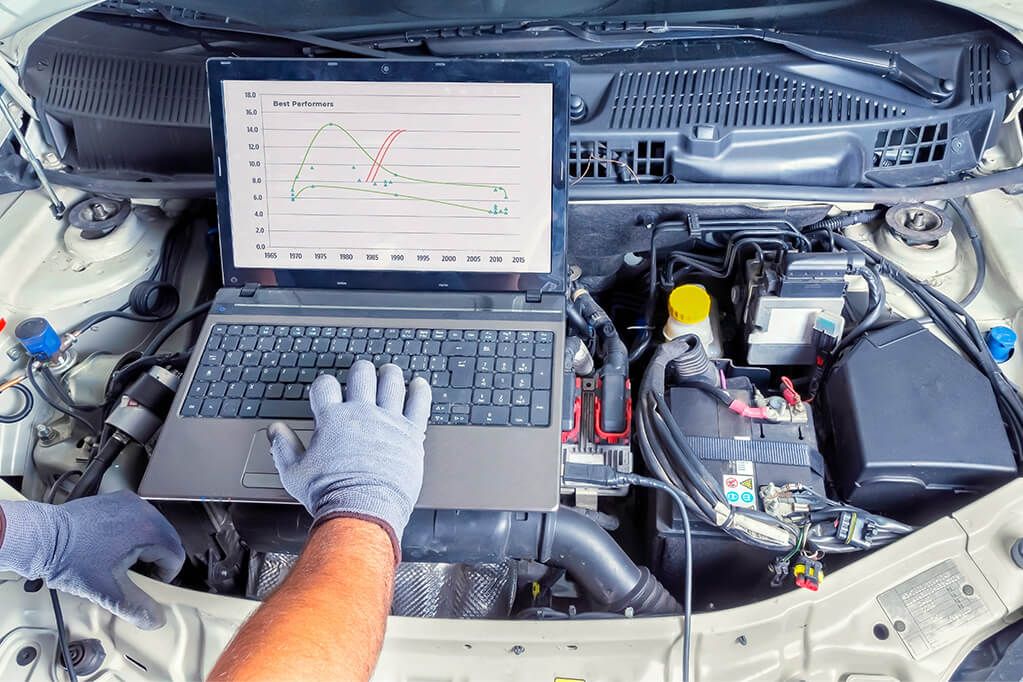In today's world of advanced automotive technology, fault codes play a crucial role in diagnosing and repairing vehicle problems. These codes serve as a digital language that communicates specific issues within a vehicle's various systems, primarily for mechanics and technicians. This article explores what fault codes are, how they work, and why they are essential for vehicle maintenance.
 What Are Fault Codes?
What Are Fault Codes?
Fault codes, often referred to as Diagnostic Trouble Codes (DTCs), are standardized codes generated by a vehicle's Engine Control Unit (ECU) when it detects a malfunction within any of its systems. These codes typically consist of a combination of letters and numbers, such as P0420 or C1234. The letters indicate the system related to the fault: "P" for powertrain (engine and transmission), "B" for body, "C" for chassis, and "U" for network issues.
How Are Fault Codes Generated?
When a vehicle's ECU detects a deviation from normal operating parameters, such as an issue with the engine, transmission, or emissions system, it triggers a fault code. The ECU continually monitors various sensors (like oxygen sensors, throttle position sensors, or engine temperature sensors) to ensure that the vehicle operates efficiently. If a sensor reports abnormal data, the ECU will store a fault code in the vehicle's memory, turning on the check engine light or other warning indicators.
Reading Fault Codes
To access fault codes, a mechanic or technician uses an On-Board Diagnostics II (OBD-II) scanner, which plugs into the vehicle’s diagnostic port (usually located under the dashboard near the steering column). Once connected, the scanner communicates with the ECU to retrieve stored fault codes. The codes can be further analyzed using diagnostic software, which can offer more detailed information about the potential issues.
Interpreting Fault Codes
While reading the codes is the first step in diagnosing a problem, understanding what the codes mean is vital for accurate repairs. Online databases and service manuals provide detailed descriptions of each code, including potential causes and recommended fixes. For instance, a code P0301 indicates a misfire in cylinder one, suggesting issues like faulty spark plugs, fuel injectors, or compression problems.
Importance of Fault Codes in Vehicle Maintenance
Fault codes are indispensable for vehicle maintenance for several reasons. They enable technicians to quickly identify issues rather than engaging in time-consuming trial-and-error fault codes methods. This efficiency not only saves time but also reduces repair costs for vehicle owners. Furthermore, being aware of fault codes allows drivers to address minor issues before they escalate into significant problems, enhancing vehicle reliability and safety.
Conclusion
In summary, fault codes represent an essential aspect of modern vehicle diagnostics. They provide clear indications of malfunctions within a vehicle's systems, allowing for timely and accurate repairs. Understanding how fault codes work can empower drivers to maintain their vehicles effectively, ensuring longevity and optimal performance. As vehicles become increasingly complex, familiarity with fault codes will be an invaluable asset for both professionals and everyday drivers.
 What Are Fault Codes?
What Are Fault Codes?Fault codes, often referred to as Diagnostic Trouble Codes (DTCs), are standardized codes generated by a vehicle's Engine Control Unit (ECU) when it detects a malfunction within any of its systems. These codes typically consist of a combination of letters and numbers, such as P0420 or C1234. The letters indicate the system related to the fault: "P" for powertrain (engine and transmission), "B" for body, "C" for chassis, and "U" for network issues.
How Are Fault Codes Generated?
When a vehicle's ECU detects a deviation from normal operating parameters, such as an issue with the engine, transmission, or emissions system, it triggers a fault code. The ECU continually monitors various sensors (like oxygen sensors, throttle position sensors, or engine temperature sensors) to ensure that the vehicle operates efficiently. If a sensor reports abnormal data, the ECU will store a fault code in the vehicle's memory, turning on the check engine light or other warning indicators.
Reading Fault Codes
To access fault codes, a mechanic or technician uses an On-Board Diagnostics II (OBD-II) scanner, which plugs into the vehicle’s diagnostic port (usually located under the dashboard near the steering column). Once connected, the scanner communicates with the ECU to retrieve stored fault codes. The codes can be further analyzed using diagnostic software, which can offer more detailed information about the potential issues.
Interpreting Fault Codes
While reading the codes is the first step in diagnosing a problem, understanding what the codes mean is vital for accurate repairs. Online databases and service manuals provide detailed descriptions of each code, including potential causes and recommended fixes. For instance, a code P0301 indicates a misfire in cylinder one, suggesting issues like faulty spark plugs, fuel injectors, or compression problems.
Importance of Fault Codes in Vehicle Maintenance
Fault codes are indispensable for vehicle maintenance for several reasons. They enable technicians to quickly identify issues rather than engaging in time-consuming trial-and-error fault codes methods. This efficiency not only saves time but also reduces repair costs for vehicle owners. Furthermore, being aware of fault codes allows drivers to address minor issues before they escalate into significant problems, enhancing vehicle reliability and safety.
Conclusion
In summary, fault codes represent an essential aspect of modern vehicle diagnostics. They provide clear indications of malfunctions within a vehicle's systems, allowing for timely and accurate repairs. Understanding how fault codes work can empower drivers to maintain their vehicles effectively, ensuring longevity and optimal performance. As vehicles become increasingly complex, familiarity with fault codes will be an invaluable asset for both professionals and everyday drivers.
